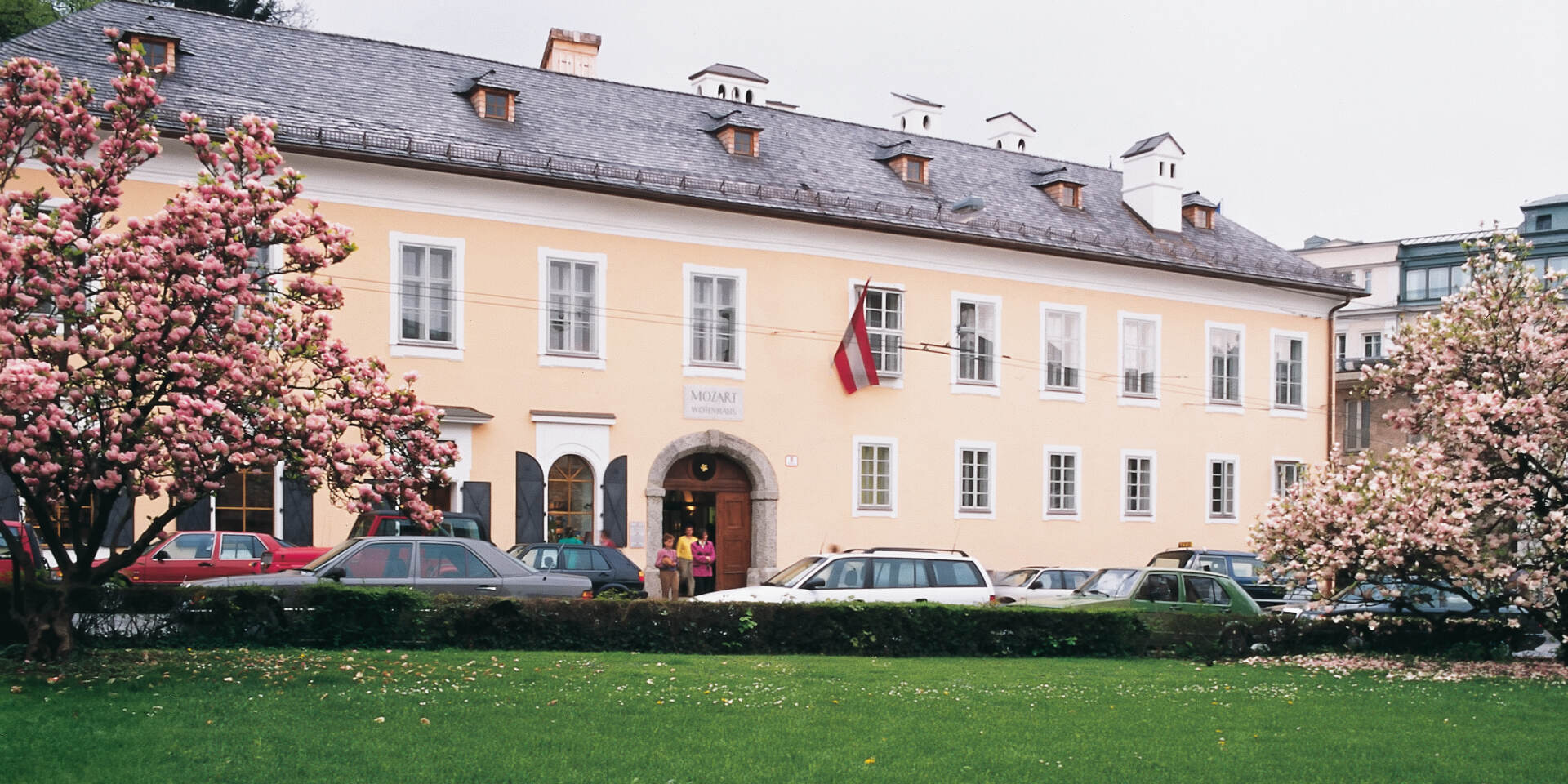
Mozart´s Residence
Visit Mozart´s Residence at the Markat Square in Salzburg
In Getreidegasse no. 9, is where the Leopold Mozart family lived from 1747 to 1773. Wolfgang Amadeus Mozart was born here on January 27, 1756. Today the rooms once occupied by the Mozart family house a museum. The most famous exhibits include Mozart's childhood violin, his concert violin, his clavichord, the pianoforte, portraits and correspondence of the Mozart family.
The International Mozart Foundation first set up a museum in Mozart's birthplace, Getreidegasse 9, on June 15, 1880. During the last few decades the museum was systematically renovated by the International Mozarteum Foundation and has become a cultural site attracting thousands of visitors from around the world to Salzburg year after year.
The Mozart family lived on the third floor of the "Hagenauer House" for 26 years. The house was named after its owner and Mozart's friend, the merchant and grocer Johann Lorenz Hagenauer (1712 - 1792), and consisted of a kitchen, a small chamber, a living room, bedroom and study. On exhibit in the historical rooms are manuscripts (facsimiles), documents and souvenirs, the original portraits of the family members such as the 1789 unfinished oil painting by Mozart's brother-in-law, Joseph Lange of "Mozart at the Piano" and the historical instruments (his concert piano, clavichord and child's violin, viola) that were acquired from Mozart's widow, Constanze Nissen (1762 - 1842) and her sons, Carl Thomas (1784 - 1858) and Franz Xaver Wolfgang (1791 - 1844) by the International Mozarteum Foundation.
In 1994 the Mozart Residence was carefully renovated and reorganized by the Viennese architect, Prof. Elsa Prochazka, according to state of the art museum technology to protect the exhibits from damage.
In 1985 the apartment of Babette von Moll, the aunt of the famous Salzburg geologist and natural scientist, Karl Ehrembert von Moll (1760 - 1838) located in the rear part of the house facing University Square, was redecorated with private funds into a "commoner's apartment in Salzburg in Mozart's time". In addition to furniture and everyday utensils three themes are documented: "Mozart and the University of Salzburg", "Mozart's friendship to Salzburg families" and "Sacred music and reverence of the saints".
The second floor is dedicated to the theme "Mozart at the Theater". Numerous diorams (miniature stages) illustrate the history of the reception of his operas. Stage sets from the late 18th to the 20th century display the many different interpretations of Mozart's works. Since 1981, the International Mozarteum Foundation has presented different "Mozart" exhibitions on the first floor of Mozart's Birthplace each year.
Discover Mozart's residence and other highlights of Salzburg in 48 hours!
